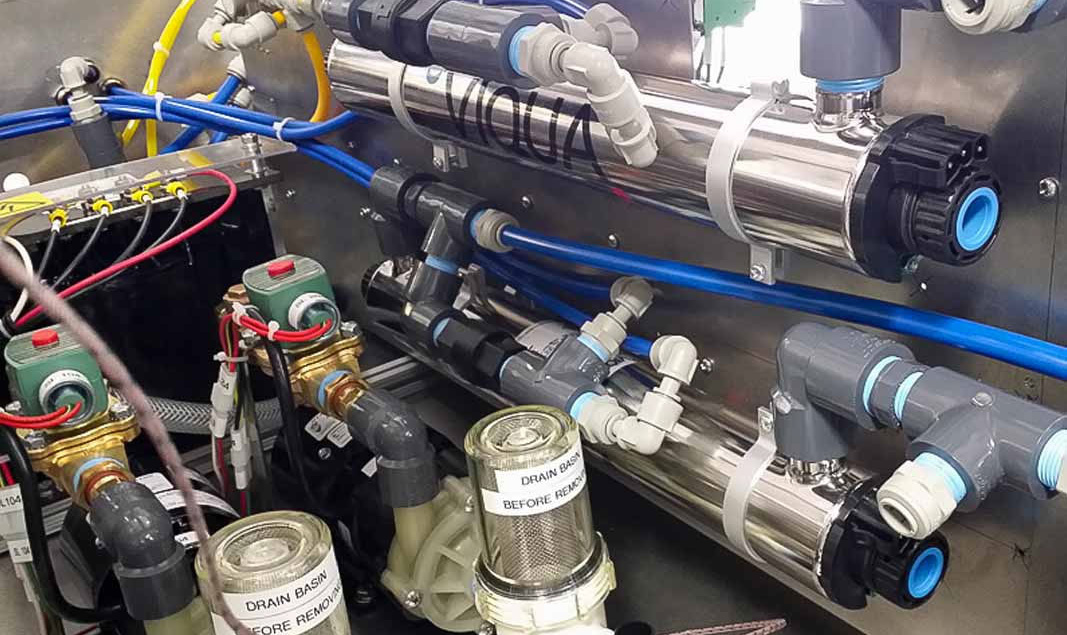Preventive maintenance
Why do you need to do preventive maintenance (PM) on your ultrasonic cleaner? For the same reason you should do preventive maintenance on your car: because like all machines, parts can wear out or break down with constant use. Doing your daily, weekly, and monthly maintenance and scheduling a service tech to complete annual preventive maintenance means your sterile processing department’s (SPD’s) ultrasonic cleaner can continue to do the job you expect of it.
If you don’t keep up with the maintenance, a part may break when all the operating rooms (ORs) are booked and you are scrambling to get all the instruments clean. If a part breaks unexpectedly, a new part must be ordered and a service tech needs to be scheduled. That could lead to a downtime of several days rather than the single hour it could take a service tech to complete a PM.
Daily maintenance tasks for SPD personnel are more about making sure the interior of the machine is clean and prepped for the next day. It involves:
- Draining any water in the basin;
- Cleaning, rinsing, and drying the basin;
- Spraying the basin and trays with an EPA-registered disinfectant;
- Replacing the drain/irrigation filter (which should be replaced at the beginning or end of each 8-hour shift, or when it is visibly soiled);
- Checking the detergent tank to be sure it has detergent; and
- Running a wash cycle with a Wash-Checks U test strip to be sure the ultrasonics are operating properly.
On a weekly basis, sterile processing technicians should do a more thorough cleaning and check that connections are tight. A few minutes of maintenance once a week can prevent random problems the rest of the week. This includes:
- Ensuring the irrigation tubes in the instrument trays are properly connected so that lumen instruments get flushed correctly;
- Checking the O-ring for any cracks;
- Cleaning the mesh screen at the bottom of the detergent tube to ensure free flow of the detergent; and
- Running an EPA-registered disinfectant through the machine.
The monthly maintenance is a little more involved, but still doesn’t take much time compared to the machine breaking down during a busy time rather than being maintained during a slower time. Once a month, the drain screen housing needs to be checked, the drain screen cleaned or replaced, and basic stability and operation need to be checked. This means, depending on your model:
- Checking the cabinet feet for stability (if applicable);
- Checking that the lid sensor is working properly (if applicable);
- Removing the machine’s front panel;
- Removing the drain screen housing and drain screen mesh;
- Cleaning or replacing the mesh;
- Checking the drain solenoid, detergent fittings, peristaltic pump tubing, and O-ring and replacing if needed;
- Reinstalling the drain screen mesh and housing; and
- Running a 1-minute cycle and checking for leaks.
Once every six months, during the monthly maintenance, SPD personnel should check the machine for any leaks, tighten the drain fittings, and tighten the titanium rod transducers.
A PM should be scheduled with a service technician once a year. During the visit, the service technician will replace parts that may wear out (such as the mesh drain screen, O-ring drain screen, bulkhead connector, tray irrigation ports, manifold ports, electrical inrush limiter, and peristaltic pump tubing) and check all wash cycle functions to be sure the ultrasonic is operating at its peak performance.
This service is much like the annual maintenance and tune-up you do on your car. It’s better to have everything checked and the parts that might wear out replaced rather than have your car die on the interstate during rush hour. By the same token, it’s better to have the wear and tear checked on all the parts of your ultrasonic cleaner and necessary parts replaced so it doesn’t break down in the middle of the busiest week in the OR. When you could be facing days of unexpected downtime for your ultrasonic, the hour or so the PM would have taken is a bargain.
